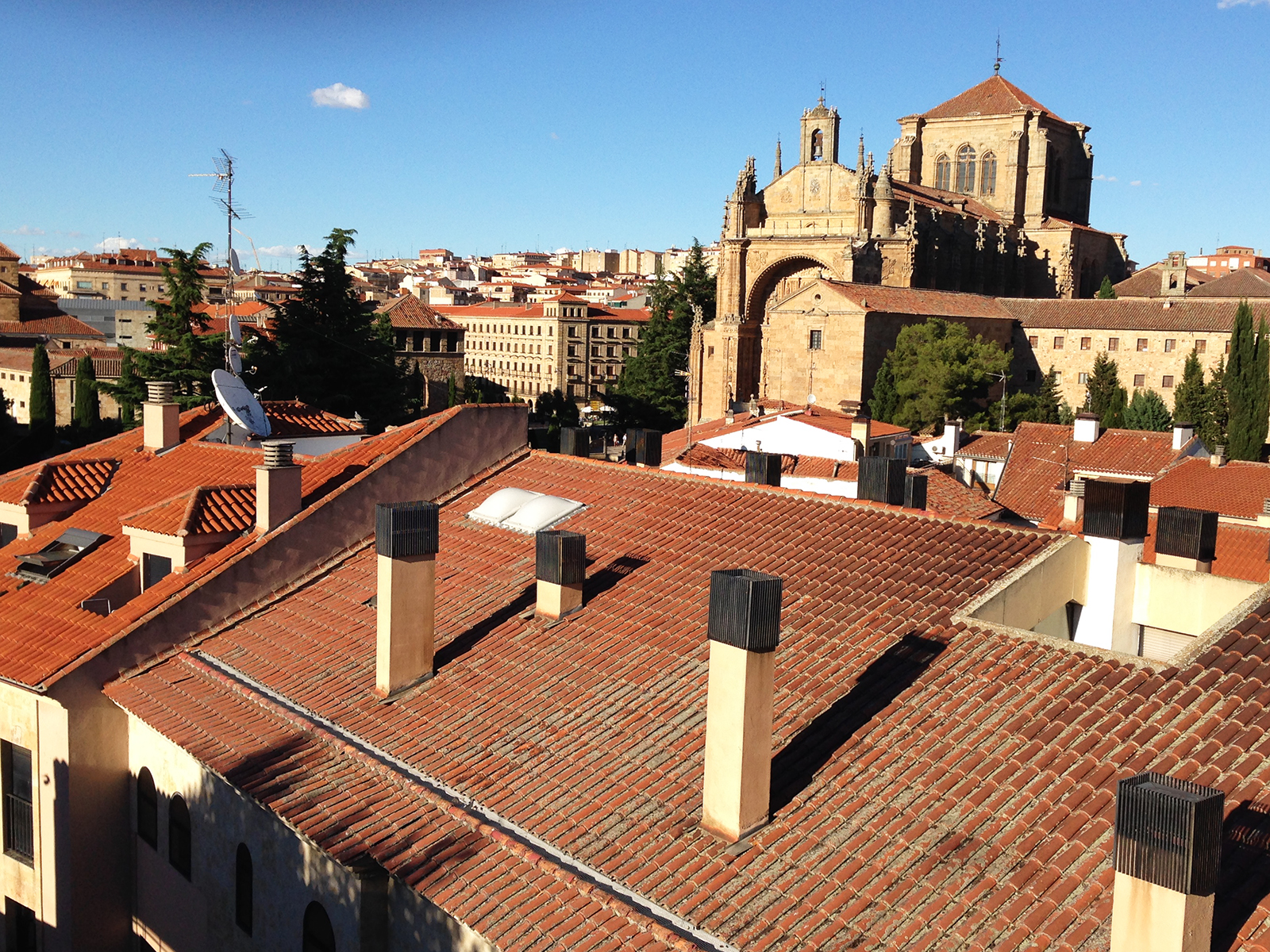Saludos de Salamanca: From foreign to familiar

(Yael Levin/Daily Bruin senior staff)
By Yael Levin
Aug. 11, 2014 12:38 a.m.
I remember the way Salamanca’s Plaza Mayor looked the first day: warm and welcoming, but also foreign.
After almost six weeks here, it couldn’t be more familiar to me.
I walk through it every day, at least twice back and forth from school. The plaza looks different depending on the time of day – the brightness blinds me in the morning, but lit up at night, it fills me with awe. Yet it’s always a shade of gold, giving Salamanca its nickname of the “Golden City.”
Babies, grandparents and preteens find ways to enjoy themselves in the plaza, whether it’s grabbing an ice cream cone from one of the heladerias, enjoying a glass of sangria or people-watching from one of the plaza’s stone benches. It’s a perfect central meeting place for both tourists and locals alike.
And it’s only one of the many parts in Salamanca I’ve fallen in love with, so my heart is heavy at the thought of leaving it behind. If you ever visit one day, here are other places in the city where you may find home:
La Cueva de Salamanca
While “The Cave of Salamanca” could not be more of a misnomer, it is one of my favorite spots to be.
We spent about an hour looking around the same abandoned buildings for this famous “cave,” where legend has it that Satan taught astrology and magic to seven students for seven years.
When we finally found the fabled sacrilegious classroom, we saw that it was actually an above-ground tower – a remnant of an old church.
The top of the tower offers one of the best views in all of Salamanca, including the Rio Tormes and the Catedral Vieja, or “Old Cathedral.” The benches to rest on are graffitied with Instagram account names and couples declaring their love, which does take away from the antiquated feeling a bit.
But the feeling of sitting at the top of the tower without anywhere else to be will stay with me.
Parque de los Jesuitas
Salamantinos, myself included, love their siestas. Most of the shops close from 2 to 5 p.m. every day, so people mostly spend time together in their apartments or outside.
After a big lunch, the Parque de los Jesuitas across the street from my host mother’s apartment offers an idyllic spot for a siesta.
The park is like a secret garden in Salamanca, with dozens of fruit trees and sweet pea plants adorning the lawns. Taking shade under the trees to write postcards, read my book or play cards with my friends on hot afternoons was great for adjusting to the slower pace of life here.
Universidad de Salamanca
The University of Salamanca is one of the oldest in Europe and definitely one of the most beautiful. It also provides the most famous symbol in Salamanca – the frog – because there is a sculpture of one hidden on the side of the university’s main building. If you can find the frog in the facade, legend says you will have good luck. Every day on the way home from class, I see tourists standing around and intently staring up at the wall, hoping for some luck of their own.
The Spanish professors encourage a much more relaxed environment than the college teachers I’ve had at UCLA. I call my professors by their first names, and the classes only have about 10-15 students, making it a more comfortable place to practice Spanish. Although the majority of international students in the course are from the United States, we also have students from Austria, Italy and China, so Spanish is our only common language.
The professors not only teach us grammar in Castellano, which is the dialect of Spanish in Salamanca, but also fun slang words and colloquialisms that I’ve really enjoyed getting to use. “Estás como un queso,” for example, literally translates to “You are like a cheese.” But it’s an old phrase that means you think someone is very attractive. “Tú eres mi media naranja” translates to “You are the middle of my orange,” but it means the person is your romantic partner.
I’ve also picked up filler phrases that are fun to say, like “vamos a ver” (let’s see), “vale” (OK) and “no pasa nada” (it doesn’t matter).
I’ll be sure hold onto these phrases to bring a little bit of Salamanca back to California with me.


